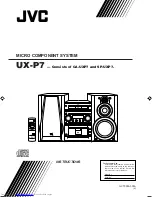
Automatic Number Identification (ANI)
Automatic Number Identification (ANI) is a T1 service feature for both E&M and DID lines. Long
distance common carriers offer ANI as a feature to dial 800 and dial 900 lines. The ANI feature provides
information to an internal telephone system that identifies the telephone number of the calling party.
Businesses served by a dial 800 or dial 900 service allow any available user to answer the calls and have
their internal telephone system process the ANI information to identify the caller’s telephone number.
The common carrier supplies ANI information as DTMF digits. When the ANI feature is combined with
the Dialed Number Identification Service (DNIS) feature, the common carrier also delimits the DNIS
information from the ANI information with an asterisk (
✻
) tone so that the DXP Plus can process each
portion properly.
Automatic Pause Insertion
When the system stores a dialed number for later redial, it automatically stores a pause whenever the user
waits between digits for at least two seconds while dialing the number. The system inserts the automatic
pause in the stored number sequence at the point where the manual pause in dialing occurred. The actual
time length of the inserted pause is programmable.
Automatic Privacy
The programmer can make a line private or non-private. In the private mode, a station has exclusive use
of the line during a call. No other station can access that line unless the original user includes it through
the use of the add-on conference feature. In the non-private mode, any stations with that line appearance
can gain access at the same time (sometimes known as common line pickup). Users may add up to five
parties into one conversation. Also see the discussions titled: Conferencing —Multiline and Privacy
Release.
Automatic Redial
With this feature, the system automatically redials a busy or unanswered outside call. Once the user
activates automatic redial, the station selects the line, automatically dials the number, and waits for a
response. (It dials and then waits 30 seconds for an answer.) If the called station does not answer, the
redialing station disconnects, waits one minute, and then repeats the sequence. The station will repeat this
procedure for approximately 10 minutes. The feature cycle is timed and does not have busy and
ring-no-answer detection circuitry. Because of this, if the redialing user is operating handsfree when the
called party answers, he or she must take the handset off-hook to prevent being cut off by the timing
cycle. The station users must program an Auto Redial button at one of the designated programmable
button locations on their telephones before they can use it.
Automatic Reports
This feature makes the system automatically generate selected station message detail accounting and call
costing reports for printing on a daily or weekly basis. The programmer sets the time that the report is to
be printed, sets the type of report to be printed, and dictates whether the call records are to be erased from
the system memory after they have been printed.
DXP Plus General Description
GCA40–130
Understanding The Features – 51
















































